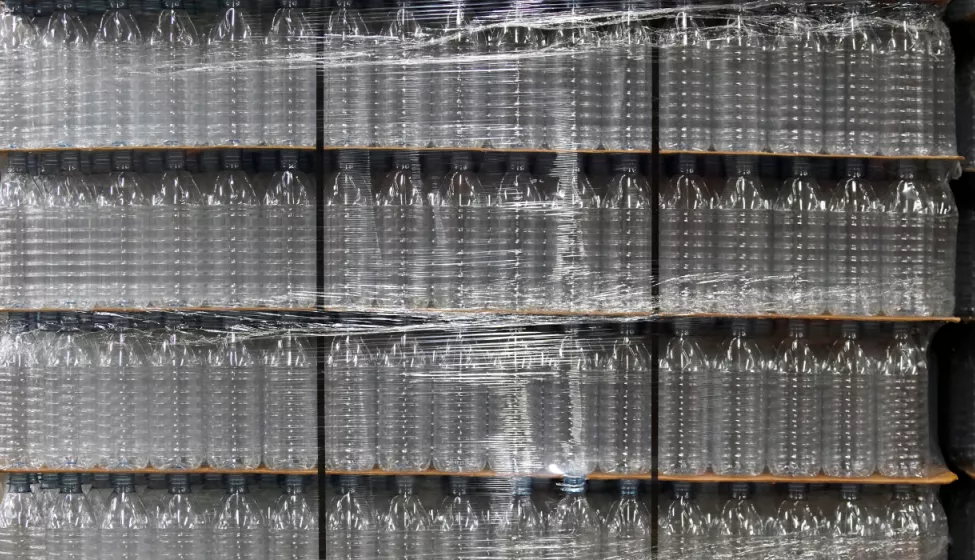August 29, 2022
The Plastic Pollution Prevention and Packaging Producer Responsibility Act aims to reduce production of single-use plastic packaging and shifts recycling costs to plastic producers
California has joined the growing list of states that have passed extended producer responsibility (EPR) legislation to shift the cost of recycling plastic packaging materials from consumers and local governments to producers of those materials.
Plastic packaging is often the most carbon- and cost-efficient packaging for delivering goods to consumers, but the packaging can become a burden to the consumer or municipality who must assume responsibility for the plastic waste. With this new EPR law, California joins Oregon, Maine, and Colorado in creating producer-funded options for post-consumer plastic waste, but while these other EPR bills regulate a variety of packaging materials, California's Plastic Pollution Prevention and Packaging Producer Responsibility Act focuses more narrowly on plastics only.
Producer regulations
The Plastic Pollution Prevention and Packaging Producer Responsibility Act (SB 54) requires packaging producers to form or join a producer responsibility organization (PRO) by January 1, 2024, and the PRO is later to develop a publicly accessible producer responsibility plan for the producer. Producers will be responsible for following the PRO plan and paying an annual PRO fee.
As of January 1, 2027, producers will not be allowed to sell, offer for sale, import, or distribute packaged materials in California unless the producer is identified in a Department of Resources Recycling and Recovery (CalRecycle) approved PRO plan for source reduction, collection, processing, and recycling of plastic packaging materials. However, a company may comply with the law individually and be exempt from following a PRO plan if CalRecycle determines they meet several criteria:
- From 2013 to 2022, the producer achieved a net 5% source reduction of packaging materials through refill, reuse, or elimination;
- From 2013 to 2022, the producer achieved a net 8% source reduction of packaging materials through optimization, concentration, right-sizing, bulking, shifting to non-plastic packaging, light-weighting, or increasing the number of consumer uses; and
- A total of 75% of the packaging materials the producer sold, offered for sale, distributed, or imported meets a 30% recycling rate in the state as of January 1, 2023.
Producers that can demonstrate a recycling rate of 65% for three consecutive years before January 2027 or a 70% recycling rate annually thereafter may also be exempt from following a PRO plan. However, exempt producers will still be required to develop and implement a producer responsibility plan, fully cover the costs associated with implementing this plan to the same extent of a PRO-participating producer, and annually report sales, recycling, composting, and source reduction data to CalRecycle.
Producer responsibility plans are also to include a description of how post-consumer recycled content will be incorporated into packaging materials. All plastic packaging products offered for sale in the state are to achieve not less than a 30, 40, and 65% recycling rate after 2028, 2030, and 2032, respectively. In addition, plans to reduce the weight of plastic packaging materials sold, offered for sale, or distributed in the state by 10, 20, and 25% are to be developed and implemented by PROs by 2027, 2030, and 2032, respectively.
Beyond the scope of other EPR laws
These reductions are to be achieved by incorporating refillable, reusable, post-consumer recycled or non-plastic packaging or by eliminating the use of plastic packaging materials.
These facets of this legislation push beyond the scope of other EPR laws passed in states such as Oregon and Maine. As a result, the Plastic Pollution Prevention and Packaging Producer Responsibility Act has been said to include the "most sweeping restrictions in the nation." Using source reduction strategies (e.g., right-sizing, optimization), standardizing materials to simplify processing, and incorporating post-consumer recycled content or renewable materials in product packaging can also lead to adjustments in a producer's annual PRO fee, providing producers with financial incentive to reduce single-use plastic packaging materials.
Not only does this bill add California to the list of states with EPR legislation, the Plastic Pollution Prevention and Packaging Producer Responsibility Act also builds on the increasing legislation regulating plastic recycling in California (e.g., legislation restricting use of the "chasing arrows" symbol). California environmental laws often spur innovation across the country; as it may be infeasible for producers to develop different packaging products for each state with EPR legislation, California's more sweeping regulations may spur changes for all packaged products produced by national brands.
How Exponent Can Help
Exponent's multidisciplinary consulting staff closely monitors the continually changing regulatory landscape for plastic packaging, and we are equipped to help clients adapt to changes in the market. Our integrated expertise in polymer sciences, materials chemistry, chemical engineering, ecology, toxicology, and chemical regulation allows us to provide comprehensive guidance in plastic formulation and manufacturing, analyzing product life cycles, enhancing product stewardship, third-party confirmation of compliance, and assessing end-of-life impacts to the environment.


